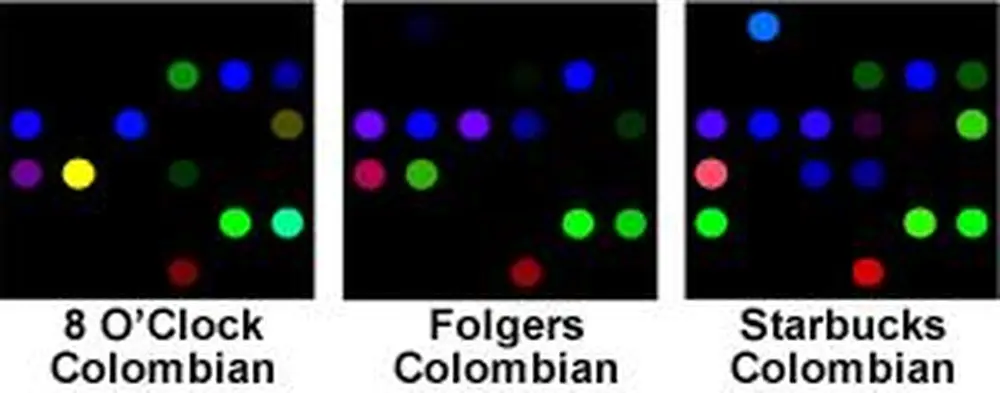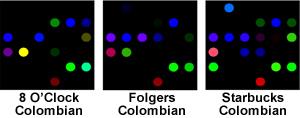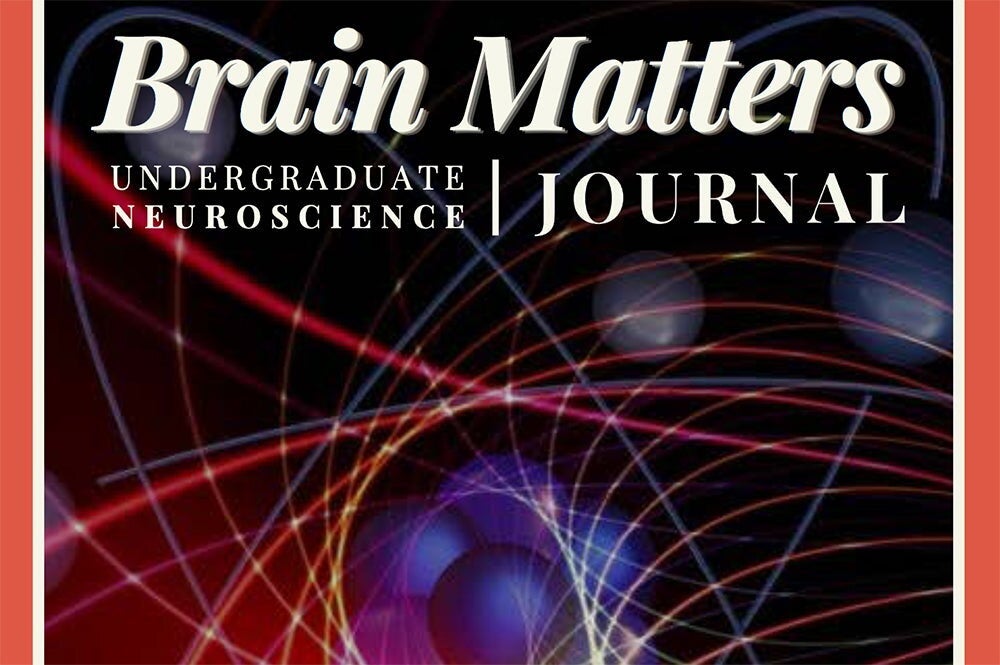

Advertisers have told us over the years that coffee “is the best part of waking up” because it “tastes as good as it smells.” Now, researchers at the University of Illinois have come up with a way to scientifically determine whether a particular batch of coffee truly is as good as it smells.
A variation on the U of I’s well-known artificial nose can distinguish among 10 different popular brands of coffee, says LAS chemistry professor Ken Suslick. What’s more, the device can tell the difference between coffee beans that have been roasted at different temperatures and for different lengths of time. It can even distinguish, instantly and accurately, whether a batch of coffee has any problems, such as burnt flavors. It’s a system the industry has been trying to develop for years.
The biggest obstacle to this kind of system has been the fact that coffee aroma is composed of over 1,000 different compounds. Other sensors have had trouble distinguishing between such complex mixtures when they are very similar to each other, as is the case with the aromas of different brands of coffee. But Suslick’s artificial nose solves this problem.
The new approach uses a printed array that is smaller than the size of a dime and comprised of 36 dyes, each of which changes color depending on its chemical environment. When the array is exposed to an odor—in this case, coffee aroma—the resulting pattern of color changes is unique to that aroma, no matter how complex the chemical mixture might be. The array of color changes is like a “molecular fingerprint.”
This system could be invaluable in helping producers check batches of coffee for quality control. It is also capable of detecting a wide range of hazardous industrial gases, even at very low concentrations.
Suslick credits his 17-year-old son, Benjamin, for spearheading the project. He is a senior at University Laboratory High School, the first author on the project’s research paper, and a coffee drinker.
“Actually, I prefer tea,” Suslick says.


